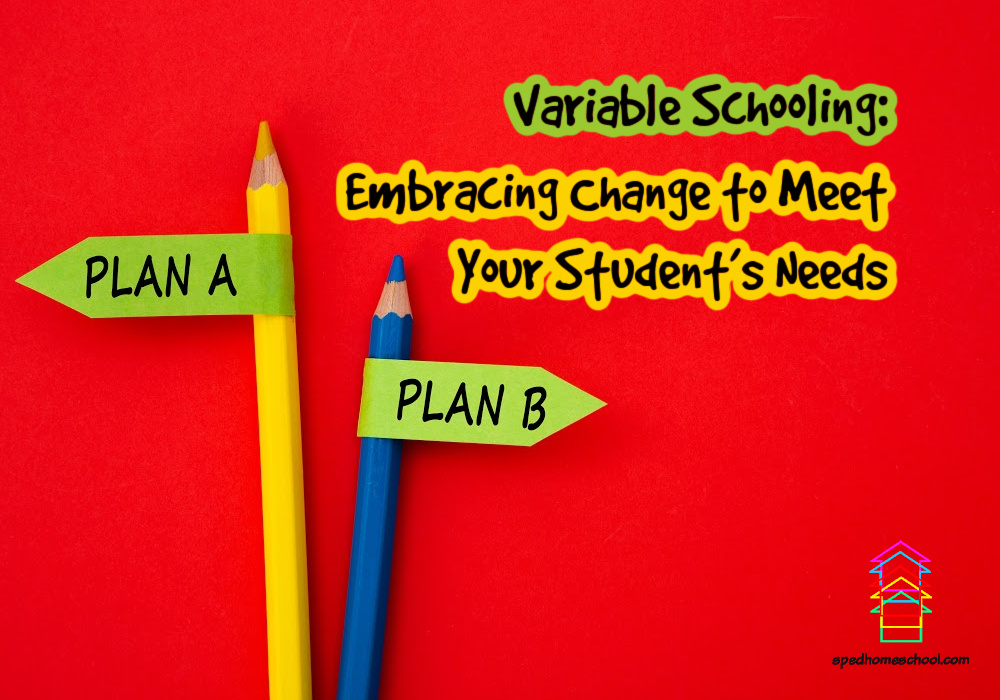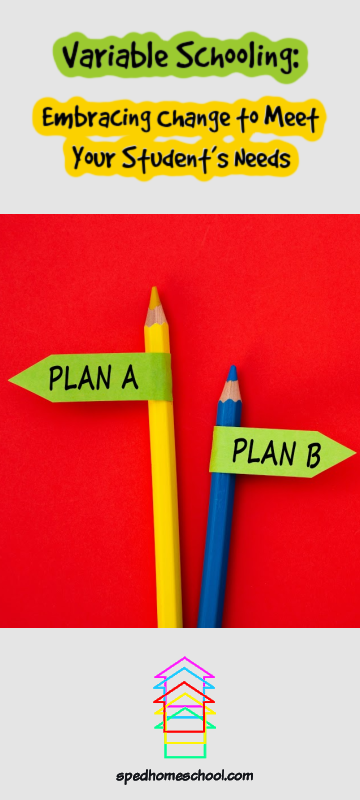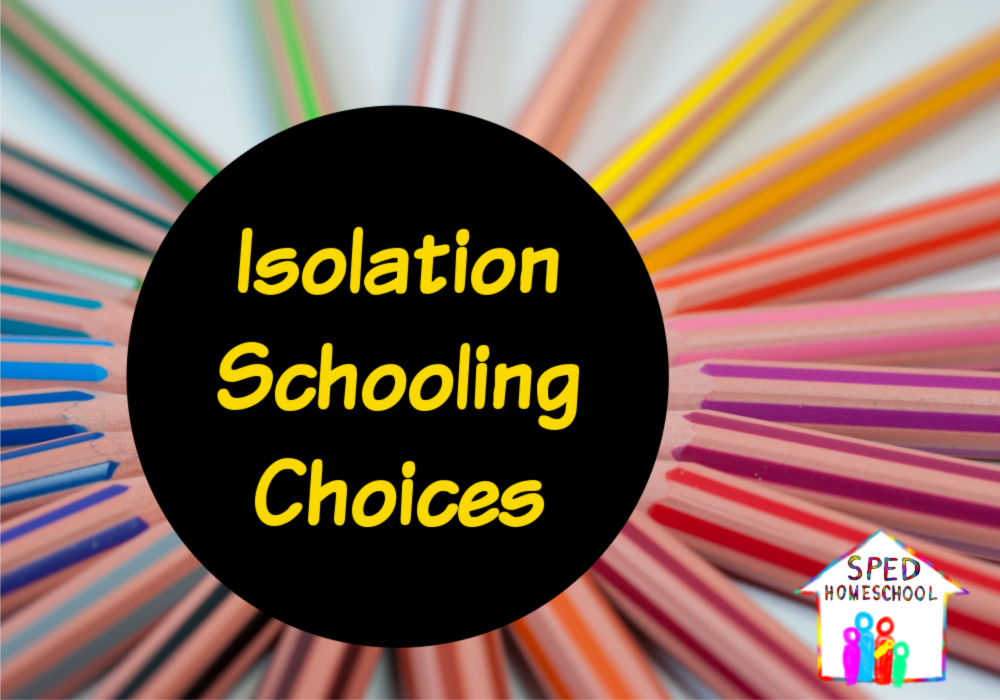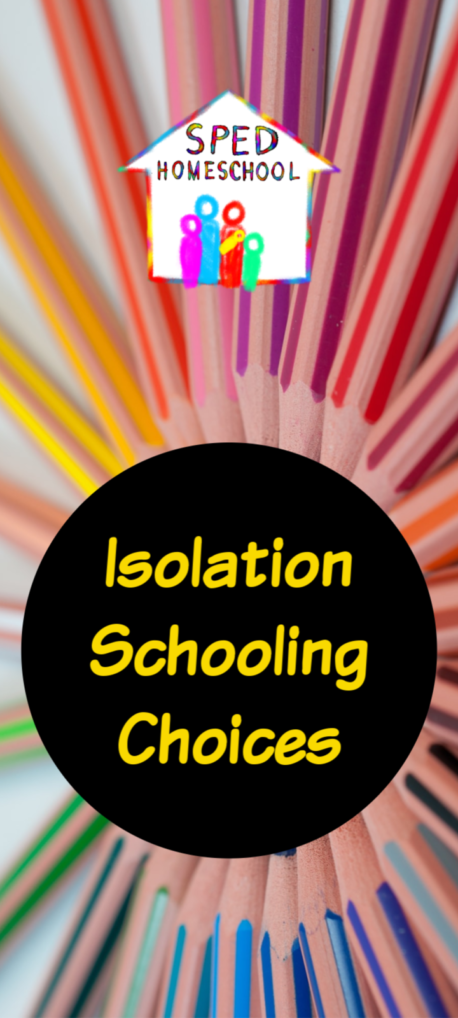
By Allison Gentala, SPED Homeschool Community Member
“Choice in education is no mere abstraction. Like its economic cousin, free enterprise, and its political cousin, democracy, it affords hope and opportunity.” President Ronald Reagan
For Special Education (SPED) students’ hope and opportunity are of immense value. Typical and gifted learners will thrive in most any environment, but SPED students have to work ten times as hard and can lose hope, especially when opportunities are limited. Often the educational choice that best fits the learning styles of SPED students is homeschool, where students can learn at their own pace and pursue their strengths while also focusing on their areas of weakness.
However, homeschooling a student with special education needs can be cost prohibitive for families, especially if there are multiple SPED students in the same family. If a student has intense learning challenges, the cost can be well over $600 a month for each type of therapy/tutoring a student receives. With several SPED students needing multiple therapies, the cost soars and can be unattainable for many families. While many families provide excellent services to their SPED students at home, the family with several SPED students will struggle to research, learn, and provide these therapies to several students with varying needs and may experience burnout.
So, what is the answer to providing that hope and opportunity to families with SPED students who want to educate at home? How might a family go about finding resources for their special learners that will allow them to homeschool and yet still meet the unique needs of their student’s learning challenges?
Some states have generous programs that fund therapies, tutoring, and curriculum, providing more opportunities for families of SPED students to enjoy teaching their children from home. One such state is Arizona. In Arizona, students can apply for the Empowerment Scholarship Account (ESA) which provides 90% of the student’s state funding to educate SPED students at home. The funding can pay for therapies, tutoring, curriculum, books, and therapy or sensory items. While there have been concerns about regulation and oversight, those fears have not been realized in the decade that the program has been serving Arizona SPED students.
Besides Arizona, there are four other states offering an ESA program, Florida, Mississippi, Tennessee, and North Carolina. Qualifying for this funding varies from state to state. If you live in one of these states and are interested in this opportunity, check your state’s Department of Education website.
As a mom of many SPED students, we utilized this funding in order to provide occupational therapy, speech therapy, and dyslexia tutoring for our children. Our journey to this funding was a multi-step process over the course of 18 months. First, we took several of our children to the local district school for an evaluation. They received an SLD (Specific Learning Disability) in several areas. We disagreed with the results and requested an Independent Educational Evaluation (IEE). Our district denied this request, and we responded with federal IDEA law showing that the district must cover the cost of an IEE or move for a hearing. The district then agreed, and we moved forward with a private evaluation at the district’s expense. Once we received the diagnoses from the provider of our choice, we had to qualify for ESA. In Arizona, homeschool students aren’t eligible for the ESA. So, in order to qualify, we did an online charter for the required hours. The charter worked with us and allowed us to use several of our current curriculum choices. They also let us count the hours spent at our weekly homeschool cooperative toward the hours needed. Once we qualified, there was simply some paperwork to complete and our students qualified. We signed a contract and could then take advantage of all the therapies our students needed, but could not afford or provide at home.
Hope and opportunity will provide a path forward for all our SPED students as they work through the challenges ahead. What a tremendous blessing these states provide for families to teach their kids at home and also access the therapies and services needed. I only wish that every state had a vision for supporting SPED students in this way.
In the end, parents have to make the decision that is best for their family and it is my hope and prayer that communities will come alongside families with SPED students and support their decisions even when we may never fully understand all the details behind those decisions.





